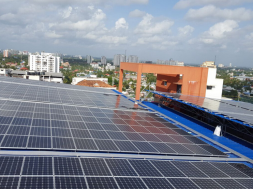
The battery packs will be analyzed and sorted; those with some life left will be given a second use, such as mobile vehicle charging stations similar to the way a power pack can be used to recharge a cellphone. Batteries that are spent will be shredded and ground to a fine powder, Volkswagen says, so their valuable and rare raw materials — including lithium, cobalt, manganese and nickel — can be extracted and sorted for use in new battery packs.
Volkswagen believes that, within 10 years, it will be able to recycle up to 97 percent of all the raw materials used in the battery packs driving its upcoming EVs. It expects the pilot project to help it reach 72 percent, up from 53 percent today.
While the pilot plant is ramping up in Germany, the company has not determined plans for battery recycling in North America after it begins selling EVs here this year with the Audi e-tron and in 2020 with the Volkswagen I.D. Crozz. “We are in regular contact with our colleagues in [North America] about recycling,” a spokesman said.
Playing catch-up
Just in February, the U.S. Department of Energy launched a three-year, $15 million effort to industrialize the recycling of lithium ion EV batteries. The ReCell Center, at Argonne National Laboratory in suburban Chicago, will coordinate research with automakers, material and battery suppliers, and several universities with the aim of using recycled materials to drive down the cost of EV batteries by 10 to 30 percent, to a goal of $80 per kilowatt-hour.

“We’re trailing the other countries,” Jeffrey Spangenberger, the center’s director, told Automotive News. “There aren’t many lithium ion battery recyclers in the U.S., so work needs to be done to catch up.”
Spangenberger said ReCell’s efforts will be focused on “trying to increase the value of the materials coming out of the [battery recycling] stream. A lot of the processes that are used currently recover low-value materials. We’re trying to find ways to get the materials back that can make more money,” including cobalt, nickel and lithium.

In addition to guiding battery recycling efforts, the research will focus on three areas:
1. Direct cathode recycling to develop processes that generate products to go back into new batteries without the need for reprocessing.
2. Recovery and recycling of other battery materials that can be resold for a second use, providing an additional source of revenue.
3. Design for future batteries to optimize the recapture and recycling of raw materials.
A big problem fast
The scope of global automotive lithium ion battery recycling is expected to grow fairly quickly into a huge issue. The International Energy Agency predicts that the number of EVs on the world’s roads could grow from about 2 million today to as many as 140 million by 2030. Volkswagen believes it will sell as many as 15 million battery-electric vehicles globally by 2025.
In addition to all those extra EVs, higher-powered fast-charging increases the battery degradation rate by as much as 400 percent, Asad Farid, an analyst at Berenberg Thematics, told the Advanced Automotive Battery Conference in Strasbourg, France, in January. That means all those quick-charging EVs will need new battery packs sooner than 10 years. Berenberg estimates that by just 2022, as many as 262,000 metric tons of automotive lithium ion batteries will need to be recycled.
“The car manufacturers have an upcoming problem, and one that we are already starting to see — this massive volume of batteries,” Johan Stjernberg, CEO of Box of Energy, a Swedish company working with Porsche and Volvo Cars, told Bloomberg last year.















